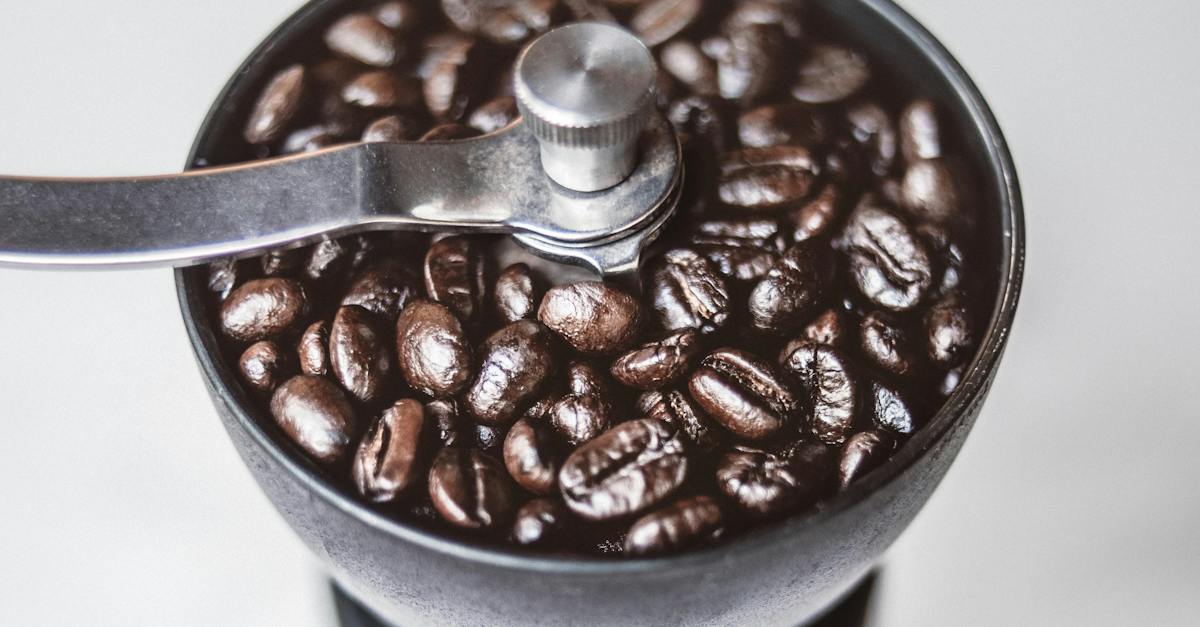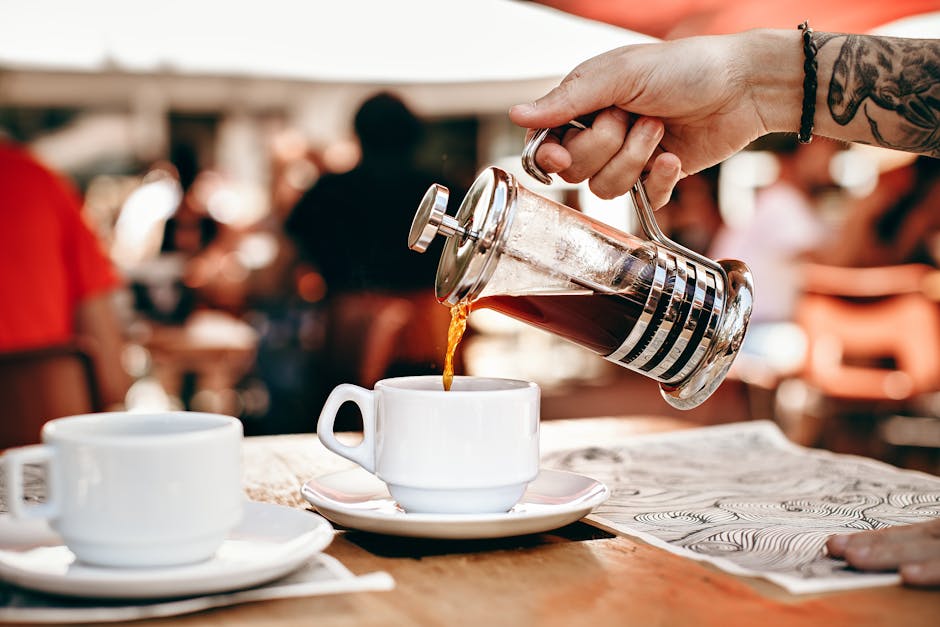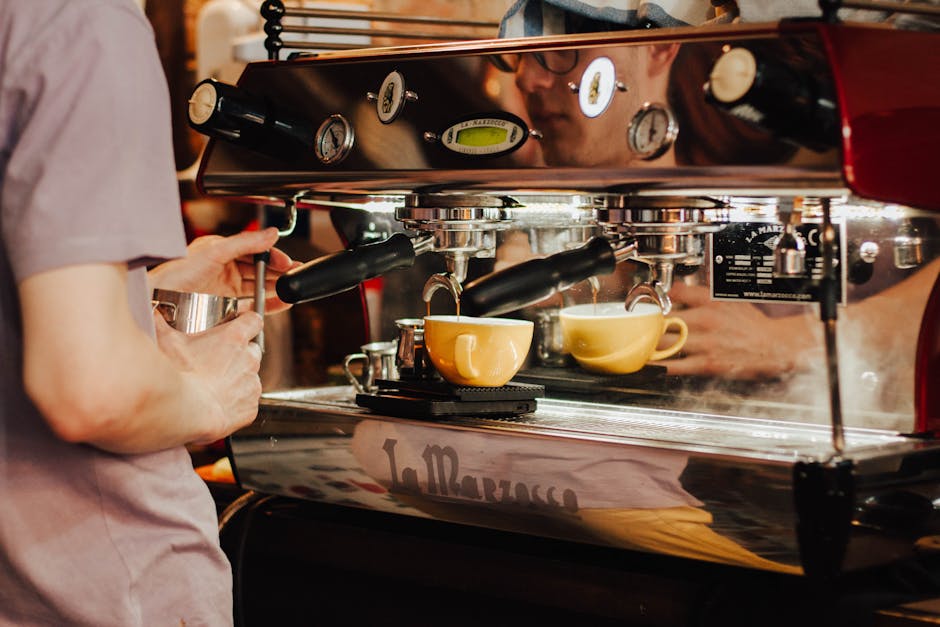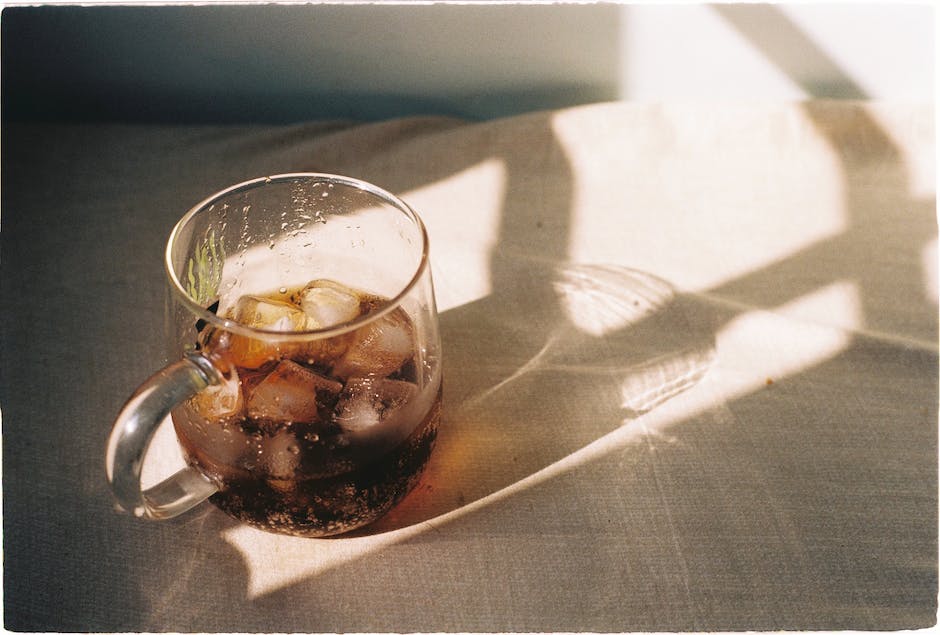How much caffeine is in your cup of coffee?


“Whether your day starts at dawn or the night is young, the key to your energy may lie in how much caffeine your coffee cup really holds. Discover the balance between alertness and well-being in every sip.”
What is it that makes your coffee kick start your day?
Coffee is more than just a hot drink; it is a morning ritual that sets the tone for the whole day. But what is the secret of its stimulating effect? The answer is caffeine – the natural stimulant that marries tea, coffee and cocoa plants.
Caffeine is working hard behind the scenes. Once you’ve sipped your morning coffee, the caffeine starts its journey, stimulating the brain and central nervous system, which send out signals to keep the body awake and alert. It’s a bit like your body getting a conveyor belt of little energy boosts to keep fatigue at bay. Caffeine is a natural fatigue fighter in this respect.
A look inside: what happens when the caffeine kicks in?
Imagine that the caffeine is quickly and efficiently absorbed into your body and then spreads out into the body tissues. It’s like an echo of energy bouncing around your body, bringing every cell to life.
The effects of caffeine are also impressive. Caffeine lifts your mood, increases your metabolism and sharpens your performance. Many times it can be the difference between a good day and a bad one. But caffeine knows when the party is over, the half-life shows when it’s time to pack up and leave the bloodstream so you can eventually start unwinding.
Caffeine reaches its peak level in the blood usually around 15-45 minutes after your first sip of coffee. After that, the caffeine starts to fade out of your system, but it takes a while – you can enjoy the energizing effect for a good part of the day. Caffeine has a half-life of about 5 hours in the human body. So it stays in your body for quite some time after you drink your coffee.
Sleep quality and caffeine – a balancing act
It’s a bit like balancing on a tightrope – research shows that caffeine can disrupt both the quality and duration of sleep. If you drink coffee six hours before bedtime, your sleep will be disturbed during the night. It’s as if the caffeine has made it harder to settle down and find that long-awaited sleep. And we all know how important it is to recharge your batteries!
How much caffeine is in your cup?
The burning question! How much caffeine do you actually get in your morning cup? The answer is that it depends on a number of factors. There are two main players in the world of coffee plants: Coffea arabica and Coffea canephora, which you may know better as Robusta. These two have different personalities when it comes to caffeine – Robusta beans are like little energy bombs with almost twice the caffeine content of their Arabica cousins.
Roasting, on the other hand, plays a minor role in determining caffeine content – it affects flavor, aroma and yes, caffeine to some extent. A dark roast may give a deeper flavor, but it does not reduce the caffeine content. In fact, the amount of caffeine changes marginally during roasting, although many believe that darker roasts mean more caffeine.
The importance of the brewing method
Brewing coffee is an art form, and the choice of brewing method will produce different caffeine contents, simply due to the concentration and amount of water. Espresso, filter coffee, press pot – each brewing method has its own caffeine strength. The brewing method can really affect how much caffeine ends up in your cup.
The surprising benefits of your caffeine intake
It’s not just a kick-start to your day – the caffeine in your coffee comes with some surprising benefits. It can be your personal trainer that improves physical performance as it actually increases fat burning. Research has even linked moderate caffeine consumption to a reduced risk of certain diseases. So the caffeine is not just there to wake you up, it does more than that!
But when you go from benefiting from caffeine to becoming a kind of caffeine zombie, it’s too much of a good thing. It’s like being at a party where everyone is talking too loud and no one can relax. Symptoms such as restlessness, insomnia, irregular heartbeat and nervousness are signs that your body is saying ‘hey, let me rest now! And we should listen – it’s not worth going to excesses with our caffeine intake.
How much caffeine in coffee should you actually drink?
Everyone wants an answer to this: how much caffeine in coffee is okay for me? The WHO and FDA set the limit at around 400 mg per day for a healthy adult – that’s about 3-4 cups depending on the strength of the coffee. So, calibrate your coffee intake and adapt to your own body and health condition.
Drinking coffee wisely – final tips for the caffeine lover
Finally, for the coffee lover, here are some great tips. First of all, keep an eye on the clock – avoid caffeine in any form after lunch for a good night’s sleep. And remember: moderation is key. Coffee and caffeine are great, but as with everything in life, enjoy in moderation.

FAQ – How much caffeine is in your cup of coffee?
How much caffeine do you get from a cup of coffee?
The caffeine content of coffee varies depending on the type of coffee and the brewing method. Generally, a cup of coffee contains around 95 mg of caffeine, but can vary from 30 mg in a cup of espresso to over 200 mg in some larger coffee mugs. Robusta beans usually have twice as much caffeine compared to Arabica beans.
Does the caffeine content differ depending on the brewing method?
Yes, the brewing method has an impact on the caffeine content. Espresso may have a higher concentration of caffeine per unit volume compared to filter coffee, but a standard-sized serving of espresso (about 30 ml) contains less caffeine overall than a standard cup of filter coffee (240 ml) due to the serving size.
How does roasting affect the caffeine content of coffee?
The degree of roasting mainly affects the taste and aroma of the coffee and has less impact on the caffeine content. A dark roast coffee generally has no less caffeine than a light roast coffee – the amount of caffeine changes marginally during the roasting process.
How long does the caffeine from a cup of coffee stay in the body?
Caffeine has a half-life of about 5 hours in the human body. This means that the caffeine gradually decreases in the blood after the initial intake, but it can still be present and have effects on the body several hours after drinking the coffee.
Is it okay to drink coffee just before going to sleep?
No, it is not recommended to drink coffee just before bedtime as the caffeine can interfere with both the quality and duration of sleep. It is best to avoid coffee and other caffeine-rich drinks at least six hours before bedtime to promote an undisturbed night’s rest.

Photo by Caique Araujo on Pexels
Photo by Wouter de Jong on Pexels
Photo by Jonathan Borba on Pexels
Continue reading
-

Pregnant and decaffeinated: safe for you and the baby?
“Decaf during pregnancy: A safe guide for expectant mothers” Decaffeination during pregnancy is an important issue for many. Pregnancy affects the body’s ability to break…
-

Coffee and health: anti-inflammatory or villain?
**Coffee and Inflammation: A Complex Relationship** Coffee is one of the world’s most widely consumed beverages and contains antioxidants that can reduce inflammation and protect…
-

Coffee and weight – are you getting the balance right?
Coffee and weight – Find your edge without tipping the scales Coffee and weight is a hot topic in health. Black coffee, with its low…
-

The truth about decaf – is it really good?
The truth about decaffeinated coffee: Is decaffeinated coffee good for you? Decaffeinated coffee is a healthy option for those who want to avoid the negative…
-

Coffee acidity: health and taste perception
The acidity of the coffee is influenced by its pH value, which is between 4.85 and 5.10. Is coffee sour? Yes, and this is due…
-

Pre-exercise coffee – does performance increase with each cup?
Drinking coffee before exercise can improve both strength and endurance, thanks to the stimulating effects of caffeine on the central nervous system. For best results,…
-

Coffee and antioxidants: your healthy cup?
**Coffee and antioxidants: a healthy cup Coffee is one of the major sources of antioxidants in Western diets, which can help reduce the risk of…
-

Turmeric in coffee – a health boost in your cup
Turmeric in coffee has become a popular trend among health enthusiasts thanks to its anti-inflammatory and antioxidant properties. Adding turmeric to your coffee can improve…
-

Roast for body in the coffee
Body in coffee refers to the fullness and mouthfeel of the coffee. It is influenced by brewing methods such as French press and espresso, as…
-

The role of coffee in the quest for a longer life
Coffee is a popular morning ritual that not only increases alertness but also contributes to a longer life. Studies show that coffee, rich in antioxidants,…
-

Coffee and health: upgrading your coffee with superfoods
**Coffee and Health: Upgrade your coffee with superfoods** Give your coffee a health boost by adding superfoods such as cinnamon, ginger, mushrooms, turmeric, maca and…
-

Is coffee dehydrating or hydrating?
**Is coffee dehydrating or hydrating? Coffee is one of the world’s most loved drinks, but is it dehydrating? Research shows that moderate coffee consumption (1-2…
-

Enjoy and feel better: 9 unexpected benefits of coffee
**Your health in a coffee cup: Benefits of coffee** Coffee, a global favorite beverage, offers many health benefits that are often overlooked. In addition to…
-

Taste guide: Detecting roasting defects in your coffee cup
Detect roasting defects in the coffee cup and improve the taste experience of the coffee. Learn to identify common defects such as underdevelopment, baked taste,…
-

The home roaster’s guide to the right green coffee
Discover the adventure of green coffee and learn how to roast at home with our comprehensive guide to buying the right green coffee. Understand the…
-

All about how coffee is harvested
A journey through the coffee harvest describes in detail how coffee is harvested, from ripe coffee berries to finished beverage. Harvesting is mainly done by…
-

Exploring third wave coffee
**From the origin of the bean to your coffee barrel: A journey with third wave coffee** The coffee industry is a global giant, covering everything…
-

Coffee with balance: decaf vs low-caf
Low-caf coffee offers a balanced solution for coffee lovers who want to avoid the negative effects of caffeine. While traditional coffee and decaf often have…
-

How to turn coffee beans into decaffeinated coffee
### How to turn coffee beans into decaffeinated coffee Decaffeinated coffee, or decaffeinated coffee, removes the majority of caffeine from the beans to avoid negative…
-

Refine your brewing art by blooming your pour over coffee
Optimize the taste of your coffee with the art of bloom pour over coffee. Flowering of coffee is a crucial step to release gases and…
-

Create a unique brand for your café – here’s how!
Creating a strong café brand means defining your ‘why’ and mission to stand out from the crowd. By integrating core values like sustainability and community…
-

Should I use different coffee filters for different roasting profiles?
Discover how coffee filters affect the taste experience! Using the right coffee filter is essential to bring out the unique flavors of each coffee variety.…
-

How to make an espresso martini at home
“Create the perfect espresso martini at home with simple ingredients like vodka, coffee liqueur, fresh espresso and simple syrup. Rooted in 1980s London, this classic…
-

Lungo: when espresso takes a bigger leap
Lungo is a coffee drink that is gaining ground in Sweden, a milder espresso with extended brewing time that provides a larger amount of coffee…
-

The charms of the Perculator – a coffee experience like no other
Experience the rich flavor of percolator coffee, a traditional brewing method that offers depth and complexity. The perculator is quick and easy, perfect for busy…
-

Do you know the coffee berry?
Discover the importance of coffee berries in the coffee flavor journey, from lush plantations to your cup. Learn about the different layers of the berry,…
-

Headache from coffee: 6 unexpected reasons
Discover the causes of coffee headaches, from caffeine withdrawal to overdose and caffeine allergy. Coffee can cause both concentration and headaches, with withdrawal symptoms and…
-

Arabica coffee beans – a world of flavor variations
Arabica coffee beans offer coffee lovers a wealth of flavors thanks to its diverse varieties such as Bourbon, Typica and Geisha. These beans, which dominate…
-

Flavor development during roasting: the magic of the griddle effect
The grinding effect is central to the transformation of the coffee bean during roasting, creating hundreds of aroma compounds that make the coffee rich and…
-

Top tips for making French press coffee
Discover the art of brewing perfect French press coffee by selecting fresh coffee beans, achieving the ideal grind and balancing the coffee-water ratio for a…
-

Attracting more café guests – your guide to a vibrant meeting place
Welcome all café guests to a place where the details create a unique atmosphere. To successfully attract visitors, cafés should strengthen their digital presence and…
-

How to use different cups for different coffees
Discover how cups for coffee can change your taste experience. Research shows that the shape of the cup affects the aroma, sweetness and acidity of…
-

Coffee giant Brazil: a deep dive into the kaleidoscope of culture
Brazil is not only known for its culture of music and carnival, but it is also a global coffee giant whose coffee traditions go back…
-

Clean your coffee grinder like a pro – for flavor
Regular cleaning of the coffee grinder is essential for an optimal coffee experience. An unclean grinder negatively affects the taste through the accumulation of old…
-

Flat white – more than just milk and coffee
More than just milk and coffee, flat white is a global coffee experience that originated in Australia and New Zealand, and has captured the hearts…
-

Ristretto – Italy’s flavorful little guy
In Italy, ristretto is more than just coffee; it is a concentrated pleasure and part of the culture. This intense espresso variant is characterized by…
-

Storing coffee beans properly: guide and tips
Learn how to store coffee beans optimally to preserve flavor and freshness. Avoid air, moisture, heat and light with airtight, dark containers and the right…
-

Growing coffee in Uganda: one bean’s journey to perfection
Uganda, a leading coffee producer, offers a wealth of flavors from the nutrient-rich red soil. The country is known for its Arabica and Robusta coffees,…
-

A deep dive into the world’s oldest brewing method
Discover the ancient art of coffee, where traditional tools like the cezve and ibrik represent the oldest brewing method for coffee, a deep-rooted tradition celebrated…
-

How to make cold brew coffee at home
Enjoy a flavorful coffee experience with cold brew coffee, a popular brewing method that produces a mild and low-acid beverage, perfect for hot days. Unlike…
